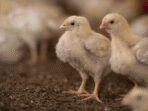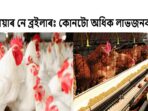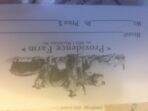Managing Waste in Poultry Farms is like trying to juggle while riding a unicycle: it can seem daunting, but once you get the hang of it, it’s a show worth watching! Waste management in poultry farming is not just about keeping things tidy; it’s a crucial part of ensuring sustainable practices that benefit both the environment and the farmers’ bottom line.
Picture this: millions of clucking chickens, each with, let’s say, a rather… productive output. How do we turn that fowl situation into something beneficial? Buckle up as we embark on this egg-citing journey through the ins and outs of poultry waste management!
In the world of poultry farming, waste management can be a game-changer. It involves the collection, treatment, and recycling of waste materials to minimize environmental impact while maximizing resources. Not only does effective waste management contribute to cleaner farms, but it also enhances soil fertility, promotes animal health, and can even generate additional income streams. So, let’s get cracking on the best practices for managing waste in poultry farms!
Once upon a thyme in a garden not so far away, there lived a snail with a personality big enough to fill a whole cabbage patch. His name was Sir Snailington, a dapper little fellow with a shell that sparkled like a disco ball at a frog party. Sir Snailington was known far and wide for his gallant adventures, though his speed was more akin to that of a sloth on holiday.

The Call to Adventure
One fateful day, as Sir Snailington was polishing his shell for what felt like the hundredth time, he received an urgent message from Lady Caterpillar. “Dear Sir Snailington,” the note read, “I am in dire need of your assistance! The Great Garden Gnome has gone missing, and without him, the flowers are wilting and the bees are buzzing in confusion!”
With a dramatic flourish, Sir Snailington donned his tiny knight’s helmet (which was actually just a thimble) and grabbed his trusty walking stick (a sturdy twig). “Fear not, dear Lady Caterpillar! I shall embark on this quest faster than a rabbit on espresso!” he proclaimed, even though he knew that “faster” for him was more of a gentle glide than a sprint.
The Journey Begins
Setting off with the grace of a ballet dancer on roller skates, Sir Snailington made his way through the garden, where he encountered all sorts of delightful characters. First, he bumped into Gary the Grasshopper, who looked like he was training for the grasshopper Olympics.
“Hey there, Sir Snailington! Where are you off to in such a hurry?”
“I’m off to find the Great Garden Gnome!” Sir Snailington declared. “Would you care to join me?”
Gary, ever the enthusiastic companion, leaped at the opportunity. “Absolutely! I could use some action. I’ve been hopping on the same patch of grass for days!”
And so, the duo set off, Sir Snailington gliding slowly along, while Gary hopped ahead, occasionally returning to share his findings. After what felt like a fortnight (though in snail time, it was merely an hour), they stumbled across a rather peculiar sight: a group of ants having a dance-off.
Ants and Antics: Managing Waste In Poultry Farms
“What on earth are you doing?” Sir Snailington asked, bemused.
“We’re practicing our moves for the Antlympics!” an ant named Anton replied, doing a spin that made Sir Snailington dizzy.
“May I join?” Gary asked, excitement dancing in his eyes. And so, for what felt like an eternity (or perhaps just five minutes), the three engaged in the most extravagant dance-off the garden had ever seen. The ants wiggled, Gary leaped, and Sir Snailington… well, he did his best, which involved many slow spins and enthusiastic wiggles that looked more like a waltz gone wrong.
After their brief foray into the world of dance, they bid farewell to the ants, who were busy planning their victory party. “Good luck, gentlemen!” the ants called as they resumed their dubious tango.
The Mysterious Mushroom Forest
As the sun began to set, casting a golden hue over the garden, the trio found themselves at the edge of the Mysterious Mushroom Forest. The forest was known for its strange fungi and even stranger creatures. “Are we sure we want to go in there?” asked Gary, eyeing a particularly large mushroom that seemed to wiggle like it was dancing to its own tune.
“Of course! Adventure awaits!” Sir Snailington replied, puffing out his chest, though it didn’t quite have the desired effect when you’re a snail. “Besides, it’s the only way to find the Gnome!”
With a mix of bravery and a sprinkle of fear, they entered the forest, where they were immediately greeted by a choir of chirping crickets who were practicing for the annual Nighttime Concert. Sir Snailington couldn’t resist a little dance, and before they knew it, they were all swaying to the rhythm of the chirps.
Finally, after what felt like hours of singing and dancing (it was actually just ten minutes), they spotted a glow coming from a clearing up ahead. Curiosity piqued, they moved closer, only to find the Great Garden Gnome sitting atop a mushroom, looking rather pleased with himself.
The Gnome’s Revelation
“Ah, Sir Snailington! I’ve been expecting you!” boomed the Gnome, who had a voice that sounded like a mixture of thunder and a gentle spring breeze.
“You see,” the Gnome continued, “I just needed a little time to recharge my mystical powers. The flowers were wilting because they were trying to be too polite!”
“Too polite?” Sir Snailington questioned, his shell spinning in confusion.
“Yes! You see, the daisies didn’t want to outshine the roses, and the tulips were worried about the sunflowers feeling left out! It was a whole mess!” the Gnome explained, waving his arms dramatically.
“Well, that explains a lot!” Gary exclaimed, shaking his head. “We’ve got to get you back to your spot!”
With a mighty heave, the Gnome jumped off the mushroom and landed with a thud, causing a nearby mushroom to wobble precariously. “Let’s get this garden back in shape!” he declared.
The Great Garden Revival
As they made their way back, the Gnome chanted incantations that made the flowers perk up and stretch towards the sky. The daisies began to dance, the roses twirled in delight, and even the sunflowers swayed happily, proving that they could all shine together.
“See? No need for politeness when you can be fabulous!” the Gnome exclaimed, and everyone burst into laughter.
Sir Snailington, feeling quite proud of his adventure, realized that sometimes the best way to solve a problem was through friendship and a little bit of fun. As they reached their destination, the garden bloomed brighter than ever, filled with laughter and joy.
Conclusion: The Moral of the Story
And so, dear reader, the moral of this whimsical tale is that it’s okay to embrace your uniqueness and shine bright. Whether you’re a snail with a penchant for adventure or a Gnome with a flair for the dramatic, there’s always a place for you in the garden of life. Remember, the flowers may wilt, but with a little encouragement and a dash of silliness, they can bloom again!
So, the next time you find yourself in a garden or a sticky situation, don’t hesitate to channel your inner Sir Snailington. Because sometimes, it’s not the speed that matters, but the joy of the journey!
FAQ Explained
What types of waste are generated in poultry farms?
Poultry farms typically generate manure, feathers, bedding materials, and food waste, all of which can be managed effectively.
How can poultry waste be recycled?
Poultry waste can be composted, used as fertilizer, or processed to generate biogas for renewable energy.
What are the environmental impacts of poor waste management?
Poor waste management can lead to water contamination, air pollution, and detrimental effects on local ecosystems.
Are there regulations regarding poultry waste management?
Yes, many regions have specific regulations and guidelines that poultry farmers must follow to manage waste responsibly.
How does waste management contribute to animal health?
Effective waste management reduces pathogens and parasites, promoting a healthier environment for the birds and ultimately leading to improved productivity.



